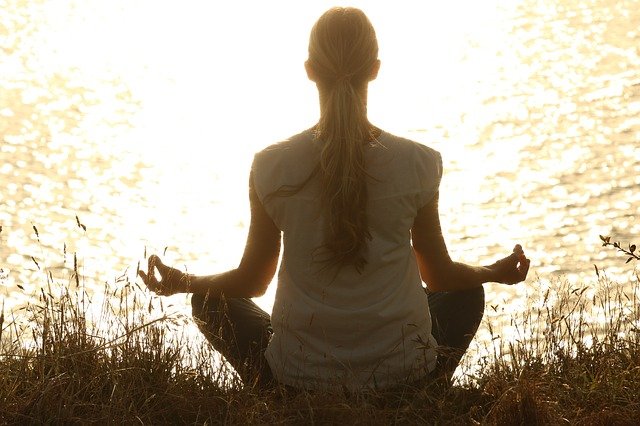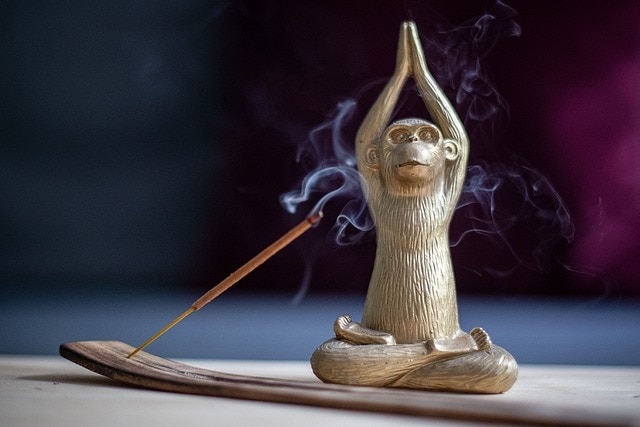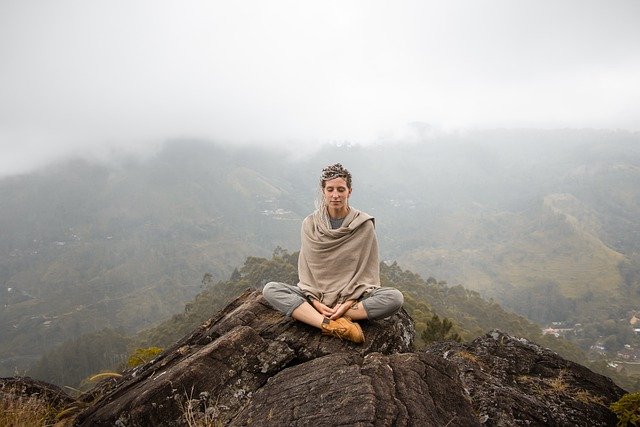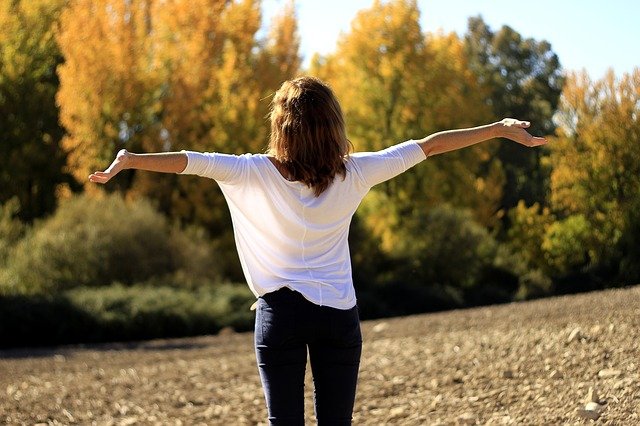While yoga is usually associated with asanas and poses, yoga breathing occupies one of the central positions in this ancient wellness practice. Yoga breathing believes that the breath or ‘prana’ moves through energy channels known as nadis and into centres known as chakras. This flow of energy is what determines the quality of your mental and physical health, which is why learning how to breathe correctly can have so many positive effects on your health.

If prana is high and steady in the body, you remain in peak physical and mental health. However, for the average person, this flow is usually blocked or slowed due to any number of factors. A sluggish flow of prana manifests as a state of anxiety, tension, and uncertainty on the mental level and as sickness and disease on the physical level.
According to yoga, these problems first appear in subtle ways, becoming obvious much later at the physical and mental levels. By learning yoga breathing exercises, you can learn to harness this prana or universal energy and improve the quality of your life.
What is yoga for breathing?
Yogic breathing may be better known as ‘Pranayama’. Prana is the universal energy or life force that powers the visible and invisible aspects of the body; nourishing the mind and sustaining the body. Ayama means harnessing or lengthening the flow of this universal energy.
Prana is also sometimes referred to as chi in other Eastern cultures and lives in everything from the sun, to your food, trees and all other creatures. The practice of yogic breathing makes use of ancient breathing exercises to control the energy and apply it to daily living. By controlling the breath, we control the prana.

Whether you’re just doing some yoga for back pain or looking at starting a regular practice, you can incorporate breathing exercises today.
The physical benefits of yoga breathing
Most of us tend to breathe poorly, using only the top part of the lungs. This deprives the body of oxygen and leads to the build-up of carbon dioxide and toxins within the body. Through yogic breathing techniques, you relearn how to breathe to capacity and enjoy the following physical benefits:
- Kickstart the digestive system to improve appetite and digestion
- Boost metabolism
- Allow effective thermoregulation
- Strengthens the circulatory and respiratory systems
- Regulating energy flow within the body by clearing the nadis and chakras within the body
The emotional and mental benefits of yoga breathing
Yogic breathing exercises boost mental health by teaching us how to inhale sufficient quantities of oxygen and distribute it to every part of the body. It offers the following mental health benefits:
- Stimulates the parasympathetic nervous system promoting deep relaxation
- Strengthens memory
- Improves concentration
- Balances and harmonizes the two hemispheres of the brain
Yoga poses and yoga breathing exercises
Yogic breathing does not receive as much importance as poses, especially in Western societies. Most yoga instructors teach the correct inhale-exhale patterns for each pose but learning the correct and diverse techniques for yoga breathing can be a workout on its own.

When you inhale in yogic breathing, you fill your lungs and expand your stomach, causing certain changes to your body. When you exhale, you pull your core muscles in and dispel air through your nose and mouth. A yoga instructor uses the differences in the body as a protective position for moving into tougher new poses or holding a pose.
It is not just yoga that uses breathing to get the most out of exercise. Weight-lifters, runners, swimmers and cyclists use breathing exercises to boost their performance too. But yoga is one of the few practices that use breathing for long-term emotional and physical health benefits.
What are the different types of yoga breathing exercises?
The different yogic breathing techniques came about as the ancient sages of India experimented with their breath and evolved techniques that were simple and yet brought a great number of benefits to mind and body.

The most popular types of breathing are:
- Bharmari (Bee breath)
- Kapal Bhati pranayama (forehead-shining breathing technique)
- Bhastrika pranyama (Bellow breath)
- Nadi Shodhan pranayama (Alternate nostril breathing technique)
- Kumbhaka pranayama
You can do these breathing exercises at any time, as long as you have an empty stomach.
Which of the yoga breathing exercises are right for me?
Just as there are different yoga asanas for different results, each of the yoga breathing exercises can give you a unique benefit. When you’re trying to choose one for yourself, you should take into consideration your constitution and your personal goals:
- Kapalabhati pranayama creates an internal fire. It is considered the most effective technique for detoxing and clearing the channels of energy within the body. If you’re feeling sluggish and lethargic, this is a good choice.
- Nadi Shodhana or Kumbhaka offers a sense of clarity and balance to your mind. It equalizes both sides of the brain and brings harmony to your state of being. If you have an important task to complete or are struggling with a decision, this is the right exercise for you.
- Bhastrika pranayama is best to amp up your energy levels. As little as three rounds are enough to provide you with a burst of energy. If you practice in the morning, this is a good breathing exercise to add at the end of your workout.
- Bharmari pranayama is most suited to quiet a racing mind. This technique is ideal for those suffering from hypertension or anxiety and is great for anyone who worries a lot.
Getting started with yoga for breathing
The best part about yoga for breathing is that you can start practising almost anywhere and at any time, even if you’re on the bus, at work, in the park, or at your gym. If you have enough place to straighten your spine and breathe deeply, you can perform all the different yoga breathing exercises or Pranayama.

To get started, begin with just five minutes of yoga breathing exercises. You can work your way up to longer durations as you get used to it. Yogic breathing is very similar to yoga asana practice because you will need to do it consistently to experience its myriad benefits. Similar to asana practice, Pranayama should be practised regularly to strengthen your physical body you’re your mind.
The rules of yogic breathing
Yoga for breathing has been a spiritual tool for centuries and has proven itself time and again. When you practice it, you are learning how to use the power of your breath to connect with your inner self and reach that place of healing and growth. Consider the following tips to deepen your pranayama practice and harness the power of your breath:
- Practice with curiosity, observing your body and mind during and after so that it becomes integrated into your daily practice.
- Exercise your attention and expand your awareness so that you can gain all the benefits of your regular practice.
- Practice with regularity and use energy and focus during each session. You’ll see the best results if you can practice twice a day, but if you’re just starting, even once a day is good enough.
- When you practice breathing, you should be focused on your breath and your body. Pick a quiet spot where you will not be disturbed for a while and switch off your phone.
- You should be comfortable during your practice. Choose a position where you can maintain the pose and have back support if you need it.

If you’re wondering “Where’s the closest centre for yoga near me?”, Avaana can help you find a yoga instructor and learn the right breathing techniques.



